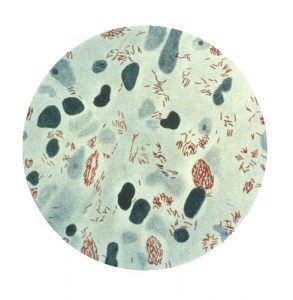Table of Contents
Leprosy Definition
“Leprosy is a chronic infection that affects the skin, mucous membrane, and nerves, and causes discolouration, lumps, disfigurement and deformities in the skin.”
What is Leprosy?
Leprosy is a disease that causes severe, scarring skin sores and nerve damage in the limbs. Leprosy disease has affected people on every continent. Leprosy is actually not that infectious but it spreads when a healthy person comes in regular and close contact with mouse droplets and leprosy patients. Children get more affected by this disease than adults. Almost, 180000 people all over the world get infected with leprosy.
Leprosy disease mainly affects the peripheral nerves, skin, upper respiratory tract and eyes. The most prevalent possibility of transmission is through the respiratory route. Leprosy is also transmitted through insects.
Let us have a detailed look at leprosy disease, different types of leprosy, causes of Leprosy, symptoms and treatment of Leprosy disease.
Types of Leprosy
There are six types of leprosy and are mainly classified based on the severity of symptoms, which include- Intermediate, Tuberculoid, Borderline tuberculoid, Mid-borderline, Borderline and Lepromatous leprosy.
Let us know more about each of them in detail.
Intermediate Leprosy
It is the earliest stage of leprosy. In this stage, patients suffer from flat lesions which may heal by themselves without progressing in case of strong immunity.
Tuberculoid Leprosy
It is a mild and less serious type of leprosy. People suffering from this disease have some patches of flat and pale-coloured skin and have no sensation in the affected area because of nerve damage. This is less infectious than other forms. This infection heals on its own, or it can persist and progress to a more severe form.
Borderline tuberculoid Leprosy
The symptoms at this stage are quite similar to the tuberculoid but the infections may be quite smaller and more in number which may continue and revert to tuberculoid, or to any other advanced form.
Mid-borderline Leprosy
The sign and symptoms of this stage are quite similar to borderline tuberculoid leprosy. This includes reddish plaques with numbness which may regress or progress to another form.
Borderline Leprosy
This type of leprosy is a cutaneous skin condition and the main symptoms include multiple wounds or scars including plaques, and flat, raised bumps that may continue or regress.
Lepromatous Leprosy
It is considered a more severe type of disease with many lesions with bacteria. The affected region is full of bumps, numbness, muscle weakness and rashes. Other symptoms include limb weakness, hair loss and other body parts such as kidneys, nose and male reproductive system are also affected. It is more infectious than tuberculoid leprosy which never regresses.
Also Read: Rickets
Causes of Leprosy

The pathogen Mycobacterium laprae, the causes leprosy
This disease is caused by bacteria, “Mycobacterium leprae” which is slow-growing. Leprosy is also termed Hansen’s disease after the name of the scientist – Dr Gerhard Henrik Armauer Hansen who discovered this infectious disease in the year 1873.
Also Refer: Common Bacterial Diseases in Humans
Symptoms of Leprosy
Leprosy firstly affects the skin and then moves on to nerves present outside the brain and spinal cord which are known as the peripheral nerves.
Although it takes three to five years for these symptoms to appear after coming in contact with the bacteria, in some cases, symptoms appear after 20 years of being infected.
The time period between being exposed and the appearance of symptoms is known as the incubation period. If this period increases then, it is very difficult for doctors to diagnose the disease.
Following are some of the symptoms of leprosy:
-
-
-
- Severe pain
- Bleeding nose
- Growth on skin
- Enlarged nerves
- Stiff, dry, and thick skin
- Ulcers on the soles of the feet
- Paralysis or muscle weakness
- Non-sensitive lesions on the body
- Numbness in hands, arms, feet, and legs
- Eye problems that might even cause blindness
-
-
Also Refer: Symptoms of Various Diseases
Diagnosis of Leprosy
The diagnosis of leprosy is based on signs and symptoms. A skin test or a skin lesion biopsy is advised by the doctors to detect the disease.
Treatment of Leprosy
Leprosy treatment fully depends on the type of leprosy the patient is suffering from. Antibiotics are used by doctors to treat the infection. Long-term treatment includes two or more antibiotics which will carry from 6 months to a year.
People suffering from severe leprosy may need to take antibiotics for a longer time period. But, these antibiotics are unable to treat the nerve damage. There are some anti-inflammatory drugs that are used to control nerve pain and severe damage caused by leprosy.
Also Refer: Antibiotics
Complications of Leprosy
-
-
-
- Blindness
- Kidney failure
- Muscle weakness
- Disfiguration of the face
- Infertility and Erectile dysfunction in men
- Permanent damage to the nerves within the brain
- Permanent damage to the nose from the inside resulting in nose bleeding
-
-
Also Read: Scurvy
For more detailed information about leprosy, types of leprosy, causes, symptoms and treatment, keep visiting BYJU’S website or download BYJU’S app for further reference.

Comments